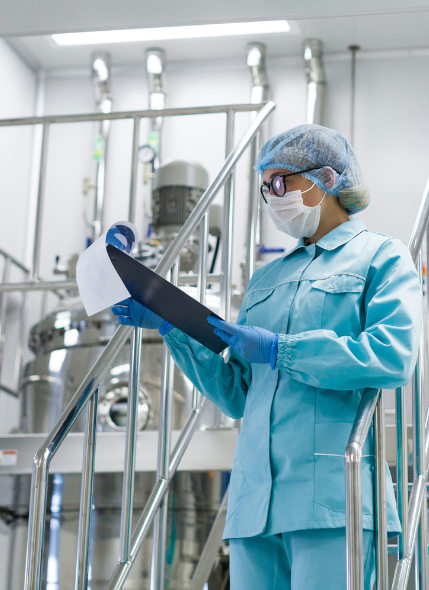Electrostatic Filters: How They Work, Pros & Cons, and How to Choose
1) First: clarify whether you’re dealing with particles or gases/odors
-
The job of an electrostatic filter is to capture particles (dust, suspended particulate, aerosols).
-
Gases and odors (e.g., toluene, ammonia) are molecular pollutants that typically require adsorber media (such as activated carbon) for effective removal.
-
Their in-service behavior differs:
-
Particulate filters: over time the pressure drop rises and airflow falls.
-
Adsorber media: pressure drop changes little, but removal efficiency declines as the media saturates.
-
2) What is an electrostatic filter
An electrostatic filter is a fiber medium that captures particles with the help of charged fibers or polarizable regions. Common forms include:
-
Passive electret nonwovens (e.g., polypropylene): the medium holds long-lived charges after treatment and delivers electrostatic capture without external power.
-
Tribo-electric nonwovens (“electrostatic cotton”): dissimilar fibers develop potential differences, increasing the likelihood that particles are attracted.
-
Washable structural filters: rely on structure and tribo-electric effects for initial performance, but repeated washing may reduce long-term performance.
-
Active electrostatic precipitators: use high voltage to charge particles and collect them on plates; power and regular cleaning are required. This article focuses on passive media.
3) Four particle-capture mechanisms
1. Direct interception
Concept: As a particle follows the airstream, its finite size causes it to touch a fiber when the shortest centerline-to-fiber distance is smaller than the particle radius, and it is retained.
Dominant when: Mid-size particles (~0.1–1 μm), finer fibers, tighter pores, or greater media thickness.
Design note: Higher interception usually comes with higher pressure drop; balance efficiency and resistance.
2. Inertial impaction
Concept: Larger particles or higher face velocities increase particle inertia; when the flow bends sharply around fibers, particles cannot fully follow the streamline and impact the fiber.
Dominant when: Particle size > ~1 μm or velocity is higher; common in prefilter stages.
Design note: Increasing velocity strengthens impaction but also raises pressure drop and energy use; coarse, open structures up front help reduce clogging.
3. Brownian diffusion
Concept: Very small particles undergo random motion due to molecular collisions, deviate from streamlines, and contact fibers.
Dominant when: < ~0.1 μm; more effective at lower velocities and with greater thickness (longer residence time).
Design note: Ultra-tight porosity isn’t mandatory; moderate thickness and suitable velocity can lift capture while managing resistance.
4. Electrostatic attraction
Concept: Long-lived charges or polarizable regions in the medium create fields that attract particles to fiber surfaces, including:
-
Coulombic attraction: oppositely charged particles and fibers.
-
Induced polarization: even neutral particles can be polarized in a non-uniform field and drift toward fibers.
Dominant when: The most-penetrating size range (~0.1–0.3 μm) benefits the most; enables higher efficiency at the same pressure drop.
Design note: Heat, humidity, oil mists, and washing can accelerate charge decay; use prefilters, set changeout intervals, and rely on measured performance curves.
Size vs. dominant mechanism (quick view)
-
> 1 μm: impaction and interception dominate.
-
~0.1–1 μm: interception is important; electrostatics provides a significant boost.
-
< 0.1 μm: diffusion dominates; electrostatics further helps.
-
The most-penetrating range is typically ~0.1–0.3 μm; adding an electrostatic layer effectively reinforces this zone.
4) Advantages and limitations of electrostatic filters
Advantages
-
At comparable airflow, typically lower pressure drop with better fine-particle capture, aiding energy savings and noise control.
-
Slim/light builds and easy multilayer combinations (prefilter, support, adsorber).
-
No external power for passive media; maintenance is straightforward.
Limitations & risks
-
Environmental sensitivity: humidity/heat, oil mists, and washing accelerate charge decay.
-
Functional boundary: not suited for gases/odors; add adsorber layers (e.g., activated carbon) when needed.
5) Positioning vs. other filter media
The table shows relative trends; real performance depends on material, basis weight, porosity, thickness, velocity, and test method.
| Type | Primary mechanism | Fine-particle efficiency (overview) | Pressure drop (relative) | Maintenance | Key application focus |
|---|---|---|---|---|---|
| Electrostatic filters (passive) | Mechanical + electrostatic | High | Low–Medium | Replace by dust load | Purifiers, HVAC, respiratory protection |
| High-efficiency mechanical media (glass microfiber) | Mechanical only | High | Medium–High | Replace by dust load; recycling is difficult | Stable ultra-high efficiency where higher resistance is acceptable |
| Washable structural | Structure + tribo-electric | Medium initially; may decline after multiple washes | Low | Wash regularly | Household ventilation; verify post-wash performance |
| Active electrostatic precipitator | High-voltage collection | High | Low | Clean collection plates | Kitchen grease/commercial HVAC; must comply with regulations |
| Adsorber media (activated carbon, etc.) | Surface adsorption (for gases) | Low for particles | Low–Medium | Replace when saturated | Odor/gas removal; typically paired with particulate filters |
These are directional comparisons; actual results vary with medium design and operating conditions.
6) Application scenarios
-
HVAC / air purifiers: use an electrostatic layer to raise fine-particle efficiency while keeping pressure drop modest; add an adsorber layer if odor removal is required.
-
Respiratory protection: improve capture while keeping breathing resistance acceptable; avoid oily/solvent-rich environments that accelerate charge decay.
-
Cabin and special cases: particles and gases often co-exist—use layered designs (prefilter + electrostatic layer + adsorber).
7) Buying and evaluation checklist
-
Target pollutant: particles → electrostatic filter; gases/odors → add adsorber.
-
Fit and sealing: frame size, thickness, and gasketing to prevent bypass.
-
Pressure drop & airflow: confirm the fan curve for initial and loaded pressure drop.
-
Environment: humidity, heat, oil mists, and solvents affect service life; add prefilters or adjust operating conditions.
-
Service life: for particulate filters, watch pressure-drop rise and airflow reduction; for adsorbers, check removal curves and saturation time.
-
If an adsorber layer is used: review surface area, pore-size distribution, and surface chemistry against target gases, and request measured data.
8) What AERO PRO offers
-
Electrostatic media: electret nonwovens and tribo-electric nonwovens; single- or multi-layer designs tuned for target efficiency and pressure drop.
-
Adsorber composites: wet- and dry-process activated carbon (powder, granular, pellet, fiber) for masks, cabins, HVAC, and purifiers.
-
Functional options: specialized modifications and corresponding tests (e.g., ammonia, selected VOCs, antibacterial performance).
-
Validation support: dynamic analysis, sealed-chamber adsorption, and cabin-grade protocols providing efficiency, pressure-drop, and durability curves.
9) Frequently asked questions
Can it be washed?
Generally not recommended. Water or alcohol causes charge decay and a marked drop in efficiency. If a product claims washability, check data after multiple wash cycles.
How does it compare with high-efficiency mechanical media?
Different needs. For ultra-high, stable efficiency, choose high-efficiency mechanical media; for lower pressure drop while maintaining fine-particle capture, electrostatic filters are often preferable. In practice, multilayer combinations are common.









